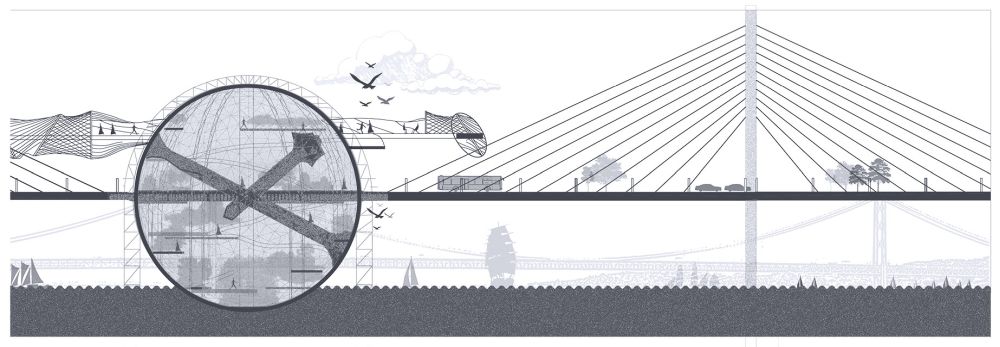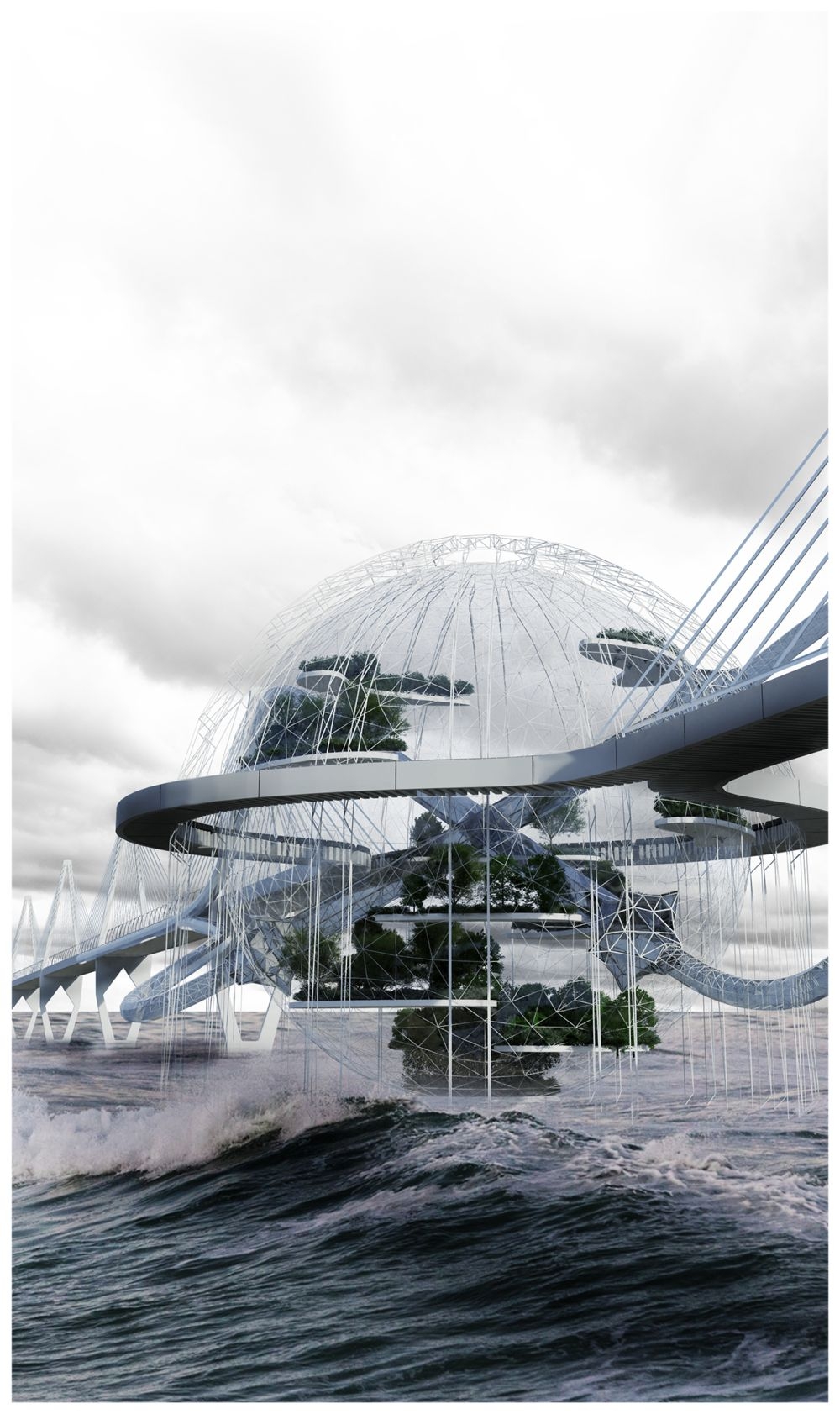YOUR BROWSER IS OUT-OF-DATE.
We have detected that you are using an outdated browser. Our service may not work properly for you. We recommend upgrading or switching to another browser.
Date: 19.04.2021 Category: general news, student activity
They had just 24 hours to prepare a conceptual design for a bridge that would link the two banks of the River Tagus in the Portuguese town of Algés. The winners proposed an unusual structure with a spherical “life zone” filled with plants. Their idea appealed to the jury of the "24H Architecture Competiton", who awarded it first place.

6.5 km long and suspended at a height of 70 m, the bridge features separate zones for pedestrians, cyclists, and drivers and – most importantly – an enormous glass sphere in the middle, named the "life zone" by its authors. Its interior would be filled with a variety of plants that have been classified in Portugal as dying species. For pedestrians and cyclists, it would be a place to enjoy a short rest, relaxation among the greenery, and an opportunity to look at the endangered flora.
This is how students of WUST’s Faculty of Architecture see the bridge over the Tagus River, linking its banks in the Portuguese town of Algés. Its concept was developed jointly by Mikołaj Kałużny, Maja Klawitter, Kornel Kurtys, Maria Opłatek, and Bartłomiej Tuczapski for the 36th edition of the "24H Architecture Competiton" organised by the industry website Ideasforward.
The challenge was to produce, in just 24 hours, a conceptual design for a bridge that was architecturally unique, used ecological solutions, and in some way referred to Portuguese tradition (in the broadest meaning of the term). The project was supposed to be "conceptual", i.e. without detailed technical studies, calculations, or analyses. The organisers didn’t specify numerous requirements to be met nor did they impose budgetary constraints on the participants. The young architects were thus able to use state-of-the-art technologies and solutions without having to take costs into account.

– Our reference to the tradition in Portugal consists in showing its flora, which may disappear any moment now, despite the protective measures being taken – says Maja Klawitter. – Initially, we were toying with the idea of creating some green spots on the bridge, but we decided this would be trivial. This is how the idea of a glass "living zone" in the middle of the bridge came into being. As the bridge is very long, those travelling on foot or by bicycle could probably do with a break. Such a green place would be a kind of reward for them for choosing to walk instead of driving a car, or for choosing a vehicle that doesn’t emit carbon dioxide, such as a bicycle or a simple scooter. On the other hand, drivers circling the roundabout would be able to see what’s inside thanks to the glass walls. Perhaps it would encourage them to choose to take a walk next time and enjoy the beauty of the place?
 Named by the students "Slow down around", the project also applies sustainable architecture solutions, such as photovoltaic panels and small wind turbines using wind energy, as well as pavements that produce electricity with the kinetic energy generated by pedestrians’ feet. These installations would meet the bridge’s lighting needs.
Named by the students "Slow down around", the project also applies sustainable architecture solutions, such as photovoltaic panels and small wind turbines using wind energy, as well as pavements that produce electricity with the kinetic energy generated by pedestrians’ feet. These installations would meet the bridge’s lighting needs.
The bridge would be made of steel, but the authors also proposed using wooden elements for the footpath. In some parts of the structure, there could be food and drink outlets to add even more life to it.
The projects submitted to the competition were evaluated by a jury comprising Portuguese architects. In justifying the verdict, they emphasised that the work of the students from Wrocław University of Science and Technology touches on the issue of the need to preserve Portugal's national heritage and that the proposed spherical space refers to futuristic scenarios for preserving the biosphere. Among other things, they appreciated the interesting form consisting in combining three elements of communications: the transport route, the promenade, and the spherical zone as a relaxation area.
Our site uses cookies. By continuing to browse the site you agree to our use of cookies in accordance with current browser settings. You can change at any time.